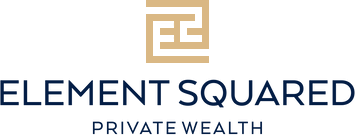Key Takeaways
Introduction
Planning for retirement can be a daunting task, but making the right decisions about your retirement plan can significantly impact your financial future. One key aspect of retirement planning is managing your 401k account, and for many, this involves rolling over your 401k from a former employer plan into a new account. Fidelity is a popular choice for handling 401k rollovers due to its extensive range of investment options and excellent customer service. In this article, we will explore the process of a Fidelity 401k rollover and discuss the benefits and considerations involved.
What Happens to Your 401(k) After Leaving a Job?
If you quit your job or were laid off and didn’t withdraw or roll over your 401(k) savings, your retirement account remains yours. You can still access your account, check your balance, and change your investment selections, but there will be some changes.
- Employee and Employer Contributions Stop: You will no longer be able to make new contributions or receive employer-matching contributions. Most of the money you contributed will be fully vested, but employer contributions may not be if you’ve been with the company for a short period.
- Administrative Fees: You will still incur any 401(k) fees associated with the account, which may increase if your former employer stops covering certain fees.
- Loan Features: If your 401(k) plan supported loans, the ability to borrow will end when your employment does.
In most cases, your money stays where it is until you decide to move it. However, there are some scenarios where this isn’t the case.
Get Started
Talk To An Advisor
Options for Your 401(k) After Quitting or Layoff
Depending on your financial circumstances, you have several options for your 401(k) after leaving a job:
- Do Nothing: If your retirement savings balance is above $5,000, you can leave your 401(k) as is. Ensure you aren’t being charged unnecessary fees and are satisfied with the investment options.
- Cash It Out: Cashing out is an option, especially if you have a low balance or need the money now. However, you’ll owe income tax on the amount and face early withdrawal penalties if you’re under 59.5 years old.
- Roll It Over Into Your New Company’s 401(k): This consolidates your retirement savings, making management easier. Ensure your new employer allows “roll-ins.”
- Roll It Over Into an IRA: Rolling over into an IRA can save on fees and offer a wider range of investment options. Most IRAs are free to open and provide more flexibility than 401(k) plans.
Can You Lose Your 401(k) After Leaving a Job?
No, you always own the money you contributed to your 401(k) account. However, there are a few scenarios to be aware of:
- Unvested Employer Contributions: Any unvested employer contributions may be forfeited.
- Change of 401(k) Providers: Your former employer may switch 401(k) providers, moving your money to a new institution with different fees and investment options.
- Forced Rollovers: Employers can force smaller balances out of the plan. If your vested balance is less than $5,000, your employer can force your money out of the plan in two ways: issuing a check for balances under $1,000 or rolling over balances between $1,000 and $5,000 into an IRA of their choosing.
Company-Specific FAQs
If you’ve been laid off from any of the companies below, we can help you locate your 401(k) and provide guidance on what to do with it.
- Walmart: Walmart’s 401(k) plan is at Merrill. Log in to Merrill’s system or contact Merrill support.
- Wells Fargo: Wells Fargo’s 401(k) plan is administered through Empower Retirement. Access it via the company intranet or Wells Fargo teamworks page.
- Microsoft: Microsoft’s 401(k) plan is at Fidelity. Log in through the Fidelity NetBenefits page.
- Amazon: Amazon’s 401(k) plan is at Fidelity. Contact Fidelity support if you don’t have your login details.
- Meta (formerly Facebook): Meta’s 401(k) plan is at Fidelity. Contact Fidelity support if you don’t have your login details.
- Google: Google’s 401(k) plan is at Vanguard. Log in to Vanguard’s system or contact Vanguard support.
Conclusion
Going through a job transition or layoff can be stressful, but your 401(k) savings are still yours. A job transition doesn’t need to derail your efforts toward saving for retirement. Element Squared Private Wealth can help you understand your rollover options and manage the entire process of moving your 401(k) into an IRA for free.


